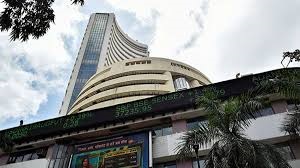On September 4, Indian investors faced a significant setback as the BSE Sensex plummeted by 500 points, resulting in a staggering loss of ₹3 lakh crore. This sharp decline has raised concerns and questions among investors about whether to stay invested or secure some profits following a record-breaking rally over the previous 14 trading sessions.
The 50-share NSE Nifty index mirrored the downward trend, falling nearly 150 points in morning trade. Despite a notable surge of 4.7% from August 14 to September 3, market sentiment has soured. Analysts attribute this shift to several key factors, including subdued global markets and overvaluation in certain sectors.
One primary factor contributing to the selloff is the global market’s lackluster performance. International markets have shown signs of weakness, which has negatively impacted investor confidence in Indian equities. This global downturn has exacerbated concerns about the sustainability of the recent rally in Indian stocks.
Another significant issue is the overvaluation of certain stocks. As the market reached record highs, some stocks appeared overpriced relative to their recent earnings. This misalignment between stock prices and earnings has caused a re-evaluation of investment strategies. Portfolio managers and analysts are particularly cautious about investing in segments that are perceived to be overvalued.
Additionally, the broader indices, such as the BSE MidCap and BSE SmallCap, while still near their record highs, present a more nuanced picture. Data reveals that 65% of stocks within these indices have experienced double-digit declines from their 52-week highs. This discrepancy between headline indices and individual stock performance suggests that while the overall market may appear robust, many stocks are underperforming.
Investor sentiment has also been affected by ongoing volatility and high valuations. For instance, some portfolio managers have opted to hold significant cash positions, citing the high valuation of certain market segments. This cautious approach reflects a broader concern about the potential for a market correction.
In this context, some investors are choosing to lock in profits and reduce their exposure to equities until valuations become more attractive. The current market environment is seen as overvalued, and many investors are awaiting a more favorable entry point.
Despite the prevailing caution, there are still areas of optimism. Certain sectors, such as engineering, manufacturing, infrastructure, and select consumption plays, are viewed as offering reasonable investment opportunities. Analysts suggest that while the overall market may be expensive, specific sectors and stocks may present value propositions.
Moreover, while some experts advocate a cautious approach, others maintain a positive outlook on equities. They argue that India’s macroeconomic fundamentals, including a robust GDP growth rate, moderating inflation, stable crude oil prices, and resilient corporate earnings, support a favorable investment environment. These factors suggest that, despite current market volatility, the long-term prospects for Indian equities remain strong.
In summary, the recent decline in the Sensex and the resultant investor losses underscore the complexities of the current market environment. With factors such as global market performance, stock overvaluation, and sector-specific issues influencing investor sentiment, the decision to stay invested or lock in profits requires careful consideration. As the market adjusts, investors will need to navigate these challenges while keeping an eye on emerging opportunities.




